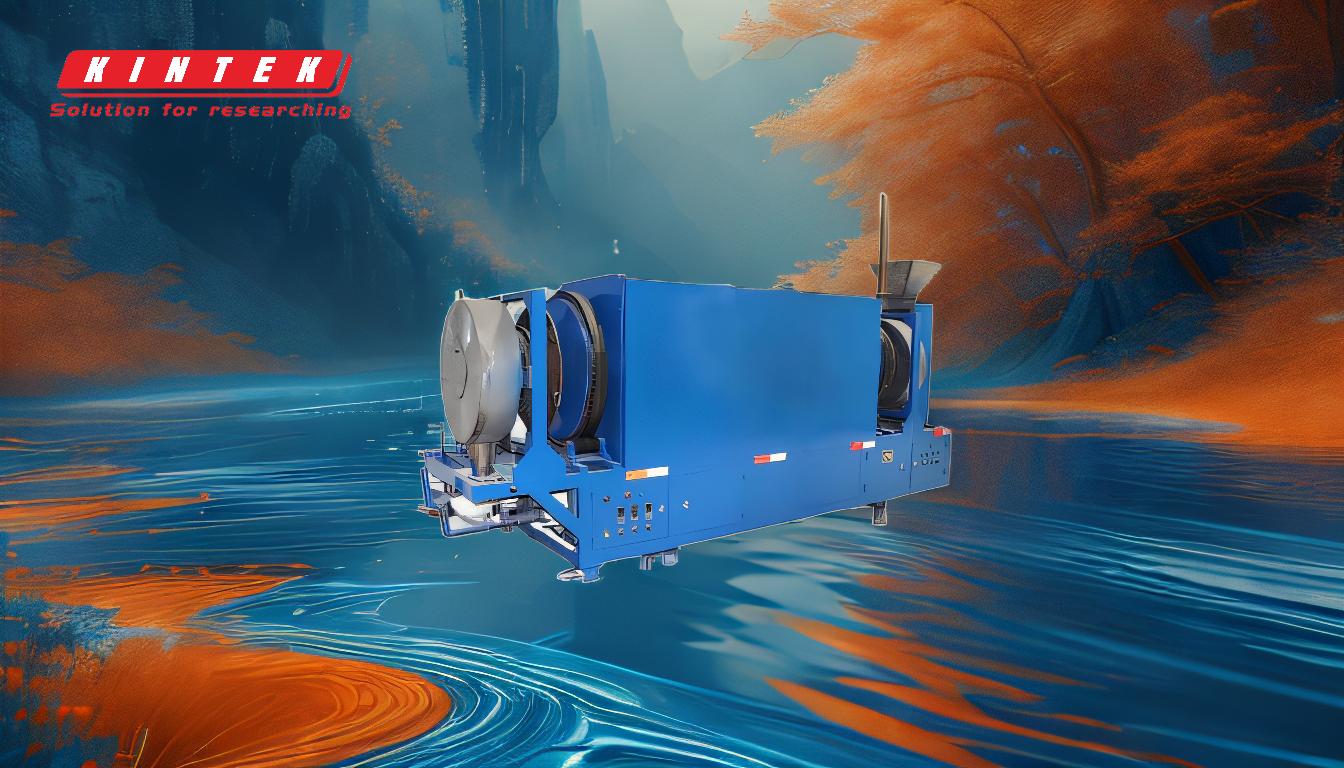Low-temperature pyrolysis conditions significantly influence the properties of biochar, making it more suitable for agricultural applications. This process, typically conducted at temperatures below 500°C, results in biochar with higher organic carbon content, increased porosity, and enhanced nutrient retention capabilities. These characteristics improve soil fertility, water retention, and microbial activity, making biochar an effective soil amendment. Additionally, low-temperature pyrolysis preserves more volatile organic compounds, which can further enhance soil health. However, the specific effects depend on feedstock type, pyrolysis duration, and heating rate. Understanding these factors is crucial for optimizing biochar production for agricultural use.
Key Points Explained:
-
Impact on Biochar Composition:
- Higher Organic Carbon Content: Low-temperature pyrolysis (below 500°C) retains more organic carbon compared to high-temperature processes. This carbon is stable and contributes to long-term soil carbon sequestration.
- Preservation of Volatile Organic Compounds: Lower temperatures preserve volatile organic compounds, which can enhance soil microbial activity and nutrient availability.
-
Physical Properties:
- Increased Porosity: Biochar produced at lower temperatures tends to have a more porous structure. This improves soil aeration and water retention, benefiting plant root growth.
- Surface Area: While high-temperature pyrolysis increases surface area, low-temperature biochar still has sufficient surface area for nutrient adsorption and microbial colonization.
-
Nutrient Retention and Availability:
- Cation Exchange Capacity (CEC): Low-temperature biochar often has a higher CEC, which enhances its ability to retain and exchange nutrients like potassium, calcium, and magnesium in the soil.
- Nutrient Release: The slower decomposition rate of low-temperature biochar ensures a gradual release of nutrients, providing long-term benefits to crops.
-
Soil Health and Microbial Activity:
- Microbial Habitat: The porous structure and organic compounds in low-temperature biochar create a favorable environment for beneficial soil microorganisms.
- pH Moderation: Biochar produced at lower temperatures tends to have a neutral to slightly alkaline pH, which can help balance acidic soils.
-
Feedstock and Process Variability:
- Feedstock Type: The properties of biochar are influenced by the type of biomass used (e.g., wood, crop residues, manure). Low-temperature pyrolysis can tailor biochar properties to specific agricultural needs.
- Pyrolysis Duration and Heating Rate: These factors affect the degree of carbonization and the final properties of biochar. Optimal conditions must be determined based on the intended agricultural application.
-
Environmental and Economic Considerations:
- Energy Efficiency: Low-temperature pyrolysis requires less energy, making it a more sustainable and cost-effective option.
- Carbon Footprint: The process contributes to carbon sequestration, reducing greenhouse gas emissions and promoting sustainable agriculture.
In summary, low-temperature pyrolysis conditions produce biochar with properties that are highly beneficial for agricultural use. By optimizing feedstock selection and pyrolysis parameters, biochar can be tailored to improve soil health, enhance nutrient availability, and support sustainable farming practices.
Summary Table:
| Key Aspect | Benefits of Low-Temperature Pyrolysis |
|---|---|
| Organic Carbon Content | Higher retention of stable organic carbon, aiding long-term soil carbon sequestration. |
| Volatile Organic Compounds | Preserved compounds enhance soil microbial activity and nutrient availability. |
| Porosity | Increased porosity improves soil aeration, water retention, and plant root growth. |
| Nutrient Retention | Higher cation exchange capacity (CEC) for better nutrient retention and gradual release. |
| Soil Health | Creates a favorable habitat for beneficial microorganisms and moderates soil pH. |
| Feedstock & Process | Tailored biochar properties based on biomass type, pyrolysis duration, and heating rate. |
| Sustainability | Energy-efficient process with a lower carbon footprint, promoting sustainable agriculture. |
Optimize your biochar production for agriculture—contact our experts today to learn more!









